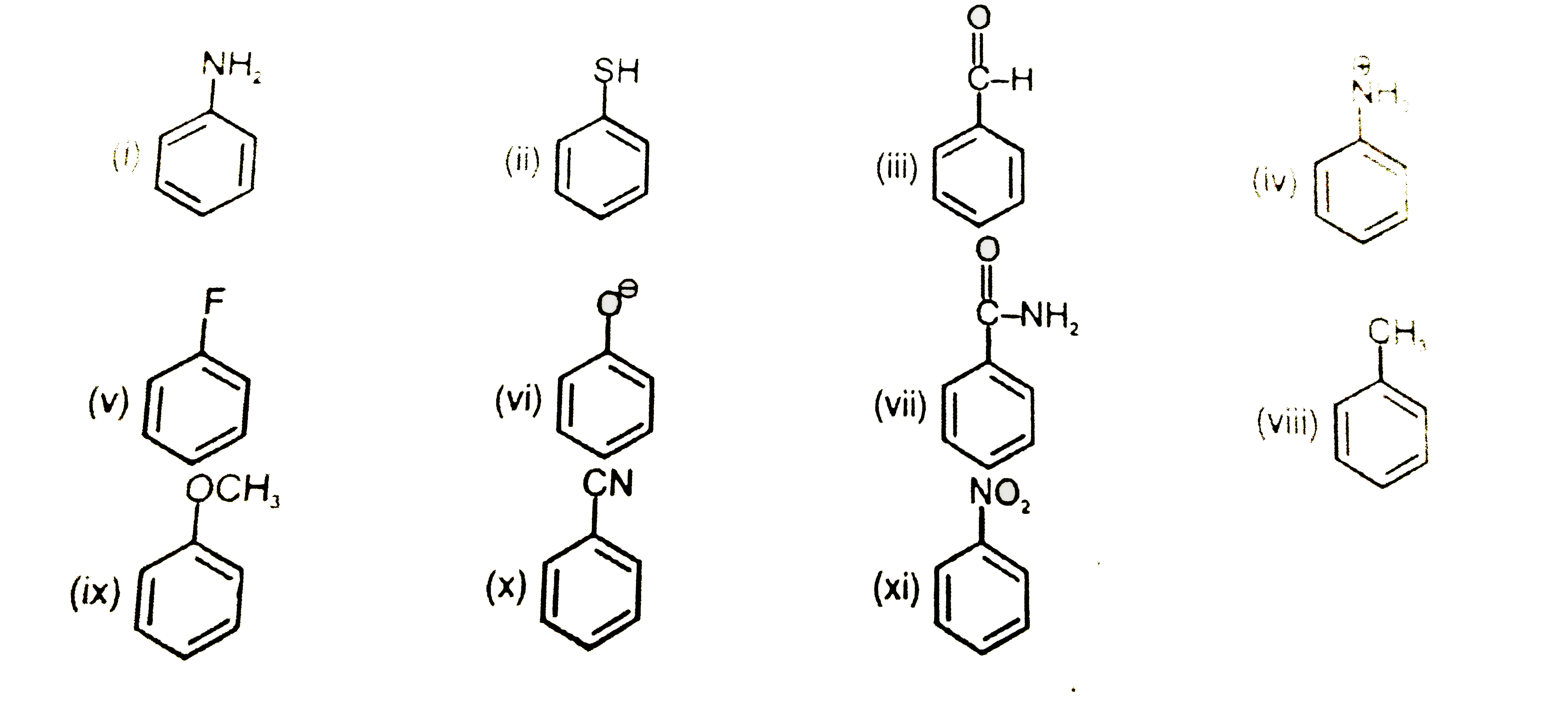Out of -OH and −NO2 groups, which deactivates the benzene ring and why?
To determine which group, -OH or -NO2, deactivates the benzene ring, we need to analyze the effects of these groups on the electron density of the benzene ring.
1. Identify the Groups:
- We have two groups to compare: -OH (hydroxyl group) and -NO2 (nitro group).
2. Understand the Nature of Each Group:
- The -OH group is known to be an electron-donating group. It can donate electron density to the benzene ring through resonance.
- The -NO2 group is an electron-withdrawing group. It pulls electron density away from the benzene ring primarily through the inductive effect.
3. Effect on Electron Density:
- The -OH group increases the electron density of the benzene ring, making it more reactive towards electrophilic substitution reactions.
- The -NO2 group decreases the electron density of the benzene ring, making it less reactive towards electrophilic substitution reactions.
4. Determine the Dominating Effect:
- In the case of the -NO2 group, the inductive effect is stronger than any resonance effect it might have. This leads to a significant withdrawal of electron density from the benzene ring.
- In contrast, the -OH group has a strong resonance effect that increases the electron density of the ring.
5. Conclusion:
- Since the -NO2 group withdraws electron density and decreases the reactivity of the benzene ring, it is classified as a deactivating group.
- Therefore, the answer is that the -NO2 group deactivates the benzene ring.
Final Answer:
The -NO2 group deactivates the benzene ring because it withdraws electron density through the inductive effect, decreasing the reactivity of the ring.
- We have two groups to compare: -OH (hydroxyl group) and -NO2 (nitro group).
- The -OH group is known to be an electron-donating group. It can donate electron density to the benzene ring through resonance.
- The -NO2 group is an electron-withdrawing group. It pulls electron density away from the benzene ring primarily through the inductive effect.
- The -OH group increases the electron density of the benzene ring, making it more reactive towards electrophilic substitution reactions.
- The -NO2 group decreases the electron density of the benzene ring, making it less reactive towards electrophilic substitution reactions.
- In the case of the -NO2 group, the inductive effect is stronger than any resonance effect it might have. This leads to a significant withdrawal of electron density from the benzene ring.
- In contrast, the -OH group has a strong resonance effect that increases the electron density of the ring.
- Since the -NO2 group withdraws electron density and decreases the reactivity of the benzene ring, it is classified as a deactivating group.
- Therefore, the answer is that the -NO2 group deactivates the benzene ring.
The -NO2 group deactivates the benzene ring because it withdraws electron density through the inductive effect, decreasing the reactivity of the ring.
Topper's Solved these Questions
- HYDROCARBONS BOOK - ICSECHAPTER - HYDROCARBONS EXERCISE - VERY SHORT ANSWER TYEP QUESTIONS
47 Videos
- HYDROCARBONS BOOK - ICSECHAPTER - HYDROCARBONS EXERCISE - SHORT ANSWER TYEP QUESTIONS
81 Videos
- EQUILIBRIUM BOOK - ICSECHAPTER - EQUILIBRIUM EXERCISE - NCERT TEXT-BOOK EXERCISE
109 Videos
- HYDROGENBOOK - ICSECHAPTER - HYDROGENEXERCISE - NCERT TEXT-BOOK EXERCISE (With Hints and Solutions)
53 Videos
Similar Questions
Knowledge Check
Which of the following groups is o-p directing but deactivates benzene ring for electrophilic substitution?
A−CH3B−NH2C−ClD−NO2Presence of a nitro group in a benzene ring
Aactivates the ring towards electrophilic substitutionBrenders the ring basicCdeactivates the ring towards nucleophilic substitutionDdeactivates the ring towards electrophilic substitution.
How many groups (attached with benzene ring) can show +M effect ?

View SolutionIn how many of the following compound. -OH group directly attached on the benzene ring ?
(1) Glycol , (2)Glycerol , (3)o-cresol , (4)p-cresol , (5)Phenol , (6)aniline , (7) anisol , (8)resorcinol , (9)catehol , (10)Hydroquinone
View SolutionAmongst −OH,−CN,CI,−NO2 groups, which do exert + M-effect when present in conjugation with a double bond ?
View SolutionExplain the fact that in aryl ethers, (i) the alkoxy group activates the benzene ring towards electrophilic substitution and (ii) it directs the incoming substituents to ortho and para positions in benzene ring.
View SolutionExplain the orientation of-COOH group, when present on benzene ring.
View SolutionNitration is an example of aromatic electrophilic substitution and its rate depends upon the group already present in the benzene ring. Out of benzene and phenol, which one is more easily nitrated and why ?
View Solution
